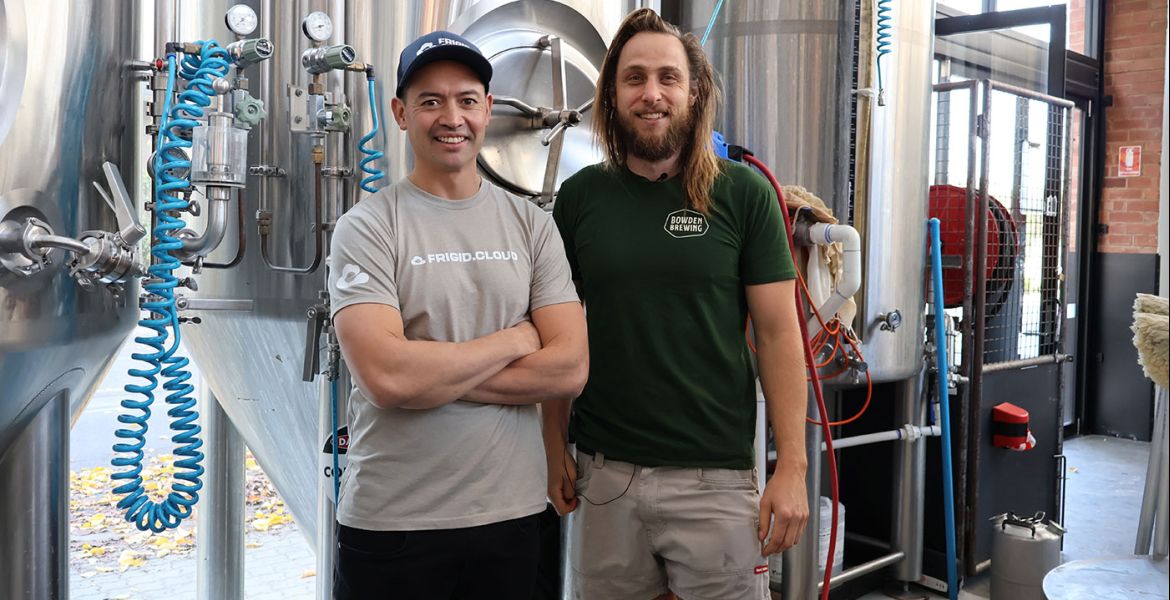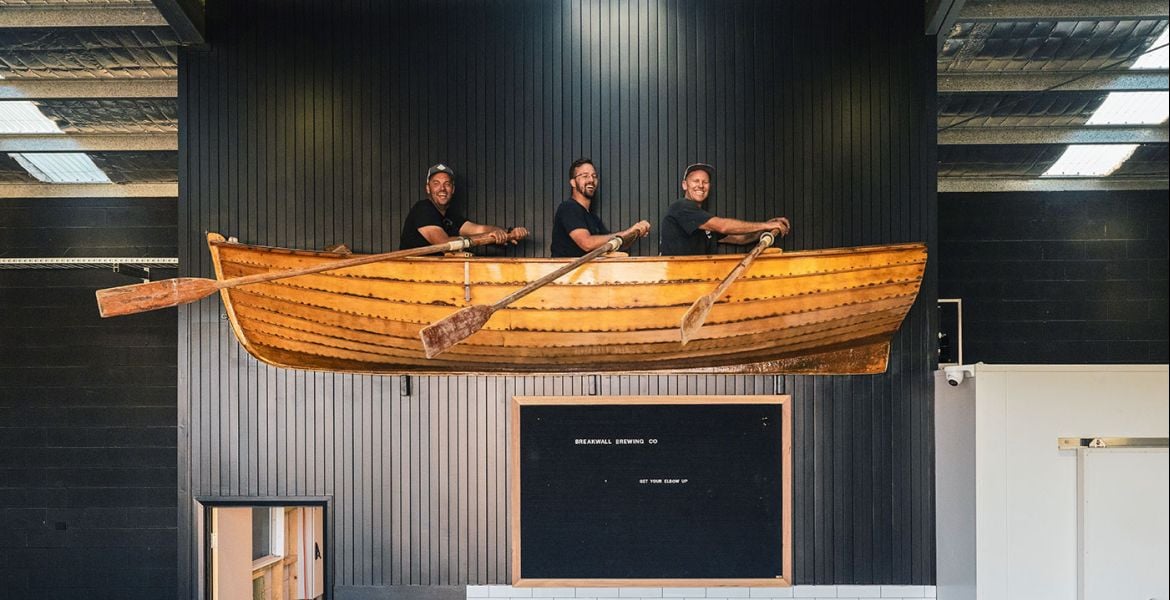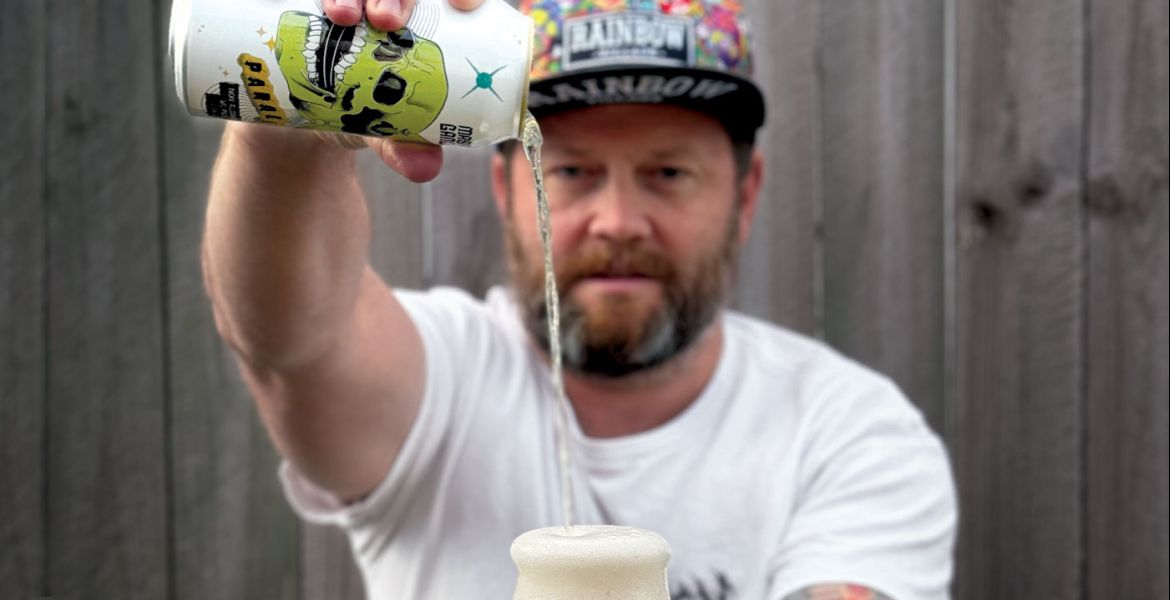For many brewers and craft beer drinkers, it was hop-forward American pale ales or West Coast IPAs that ignited their passion for beer. In more recent years, we've witnessed bitterness levels drop and sweetness rise as the world of hoppy beers became swamped with pales and IPAs tagged "hazy", "juicy" and, in some cases, "thick".
But, just as the pendulum of tastes swings one way, so it swings the other way too. Cast an eye over the fridges of craftier bottleshops and you'll notice a crisper, snappier approach to brewing with hops is gathering pace as brewers release West Coast pilsners and California IPAs.
The former take elements of traditional European pilsners before introducing more modern hops, added on the cold side of the brewing process, and Chris Farmer, co-owner and head brewer at Banks Brewing, is a big fan of the style. Admittedly, this is something that shouldn't come as a surprise given his fondness for brewing traditional lagers – including excellent core range pilsner Foam – as well as hop-forward beers in all shapes and sizes.
“It’s all I want to drink,” is his take on West Coast pilsners. “For me, it’s that perfect middle ground of being a great lager and really good American pale ale.”
Banks’ first West Coast pilsner was released well before the current rising tide: Venice Pils landed way back in 2018. Chris isn't entirely sure if it was via a beer or a podcast that he first learnt about the style but, after brewing one, it was love at first sight, even if it didn’t resonate with all of their drinkers.
“I really liked that beer but I think it was maybe a little too early for its time,” he says. “The people that liked it absolutely loved it, and then we sort of built out from that.”

Although it was an early local example of the style, Chris says there are elements of the Venice Pils recipe they retain to this day. Largely, their approach is to brew a traditional pilsner, including the use of noble European hops on the hot side, before leaving Europe behind when it comes to later hop additions.
Another brewery to take a trip into West Coast pilsner territory is Balter: their collaboration with Figueroa Mountain formed part of the brewery’s American Mouth Holiday last year. Head brewer Scotty Hargrave says they landed on the final recipe following a lot of exploration within the pilsner style; unsurprisingly, given his approach to brewing, he's given plenty of thought to where such lagers sit in the modern beer landscape.
As a longtime lager advocate, Scotty's theory is that, despite many brewers loving classic lagers, there's still a limited level of excitement among craft beer drinkers. So he figured, why can’t tradition and modern beer meet in one beer?
“My thinking was, unless we do something about it, then they’re not going to be appreciated,” he says. “You can have all the tradition in the world, but you possibly need that to go hand in hand with a more modern view.”
Given much of modern brewing’s story revolves around the development of new world hops, more traditional, noble-hopped pilsners which deliver their charms with subtlety, don’t automatically command widespread affection from drinkers raised on a more sledgehammer approach, whether in our own, or indeed America’s, contemporary beer landscape.
“You’ll get other brewers pat you on the back for it,” he says, “and the more studious beer fans might [appreciate a classic pilsner], but the general public might not get as excited as with a West Coast pilsner that has a bit more razzle-dazzle and enough of that tradition, refreshment factor and satisfaction you get from a really well made pils. If you can get those two things together, then it should be a massive style.”
Visitors to Balter’s Gold Coast home could well have enjoyed the fruits of Scotty’s ruminations in the space via his N.O.W. pilsners: small batch beers he's been tinkering with for several years.
“I thought I was being clever, with N.O.W. meaning New, Old World,” he says. “I had a rule for myself where it had to be new world hop varieties that had old world pedigree, and to see if I could make a hoppy pilsner that just doesn’t taste like a fucked up IPA or a mistake.”

The goal was for such beers to combine the mouthfeel, crispness, dryness and clean characteristics of a European pilsner with a clear influence from dry-hopping. To achieve balance, Scott directed much of his attention towards hop varieties with German or Czech parentage, such as the American varieties Crystal and Citra, with the latter's complex lineage including classic Hallertau Mittelfrüh as its father and US Tettnanger on the other side. It’s also why Scotty sees West Coast pilsners working well with New Zealand hops that have similar parentage, such as Motueka which in part stems from Saaz.
Indeed, he took the N.O.W. approach to Balter’s first Mouth Holiday beer, NZ Pils, which saw him balancing tradition with modern hops.
“For me, West Coast pils might be more in the mindset and the intention as much as anything else,” he says.
He also believes the style has great potential in Australia, not least as brewers here are already skilled at brewing heavily-hopped beers around the 5 percent ABV mark. There’s also the fact the style’s crispness and its citrusy or tropical hops naturally suit our typically warm climate.
Balter recently poured a low-carb West Coast pilsner at the taproom – designed to see how dry he could make such a beer – and they found it not only impressed Scott and his brewery crew but also local drinkers as South East Queensland sweated through a humid summer.
“I just smashed it, it was so snappy and humidity-busting,” Scotty says. “It’s going nuts in the taproom because we’ve had this incredibly oppressive humidity.”
Such beers, as the name suggests, first came to life in America, with Portland-based beer writer Jeff Alworth, the man behind the Beervana blog, name-checking the style when we spoke to him for an upcoming feature on the state of craft beer scenes overseas. He cited their development as a sign that innovation was returning to the US industry as it started to find its feet again after the challenges of the COVID years.
"The really exciting thing is the kind of lagers starting to develop [here]," he says.
The lager renaissance we've witnessed in Australia in recent years started gathering pace in the US earlier. But, says Jeff: "When people started making them, they made very traditionally and quite separate from IPAs."
Rather than "Americanising" them, as brewers had done with pale ales and IPAs, they tended to hove closer to the European classics: "About two or three years ago," Jeff says, "I would ask people why they were making these German pilsners with Weyermann malt and Hallertau hops and a mild dry-hop."
Since then, he's watched as brewers have started switching to American malts and layering US hops late in the process to create more new world aromas and flavours.
"They're sliding in the direction of the American palate. That's just delightful and I'm loving these beers," he says, adding: "There's a lot of interesting hop research producing hops that are better for American style lagers."
He's pretty sure they're here to stay too, even if he's not sold on the name, suggesting American lager or American pilsner may take over, as with the NZ pilsner style with which these beers share much in common.
We’ve Been On A Run, Driving In The Sun
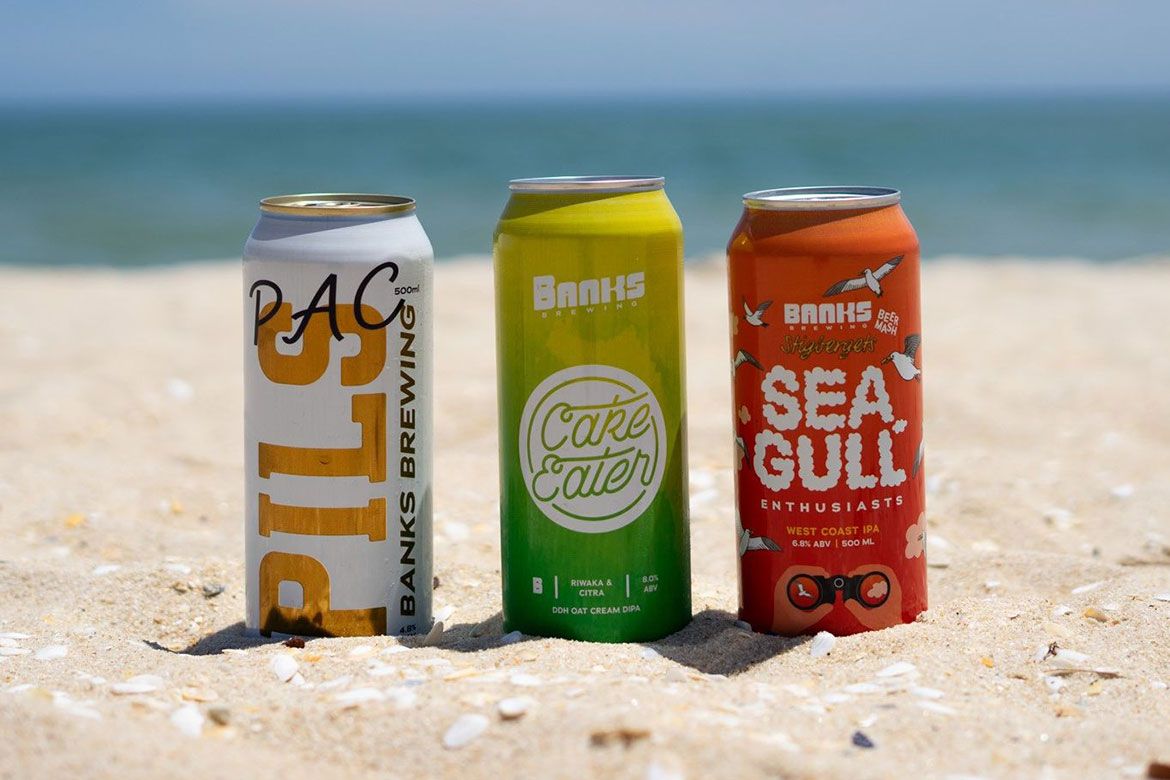
Given Banks first made a beer labelled West Coast pilsner six years ago and one of the American greats, Timbo Pils from Highland Park, goes back to 2016, what has caused the growing interest over the last couple of years, both here and in America?
Is it that cold IPA and its use of lager yeast fermented warm set the stage? Or can we credit the softly-spoken popularity of Italian pilsners with their heavier use of noble hops? Could it be the success of traditional pilsners brewed locally, like Hop Nation’s Rattenhund or those from White Bay?
Chris thinks their traction has a lot to do with the continued improvement in the quality of locally-made craft lagers, compared to past hop-forward lager styles that didn't always pan out so well.
“They could be that little bit too bitter, or a bit too grassy,” Chris says. “I think they have a better body and mouthfeel than they used to.”
He also suspects circumstances have combined to form a perfect circle of a Venn diagram made up of local brewers turning their hands to lagers and craft beer drinkers returning to them after initially turning their backs on mass-market versions.
“I think brewers like them," Chris says, "but it’s also the type of beer nerd – who I am – who has gone that full circle. You love German lagers and stuff like that but you still love hops.
“And sometimes pale ales are just a bit basic whereas, to me, West Coast pilsners taste like a five percent IPA you can drink all day.”
James McCall, co-founder of Adelaide-based Shapeshifter Brewing, agrees that brewers are largely responsible for driving the trend.
“Those are the beers we ask for when we visit each other’s breweries,” he says.
But he also thinks part of its strength is that, unlike India Pale Lager, such beers avoid the word "lager".
“As much as brewers love lager and niche craft beer drinkers love it, I think in craft circles lager on a label or decal still turns people away,” he says.
“Unfortunately, it’s 2024 and people still don’t know how good craft lagers are.”
California, Here We Come, Right Back Where We Started From
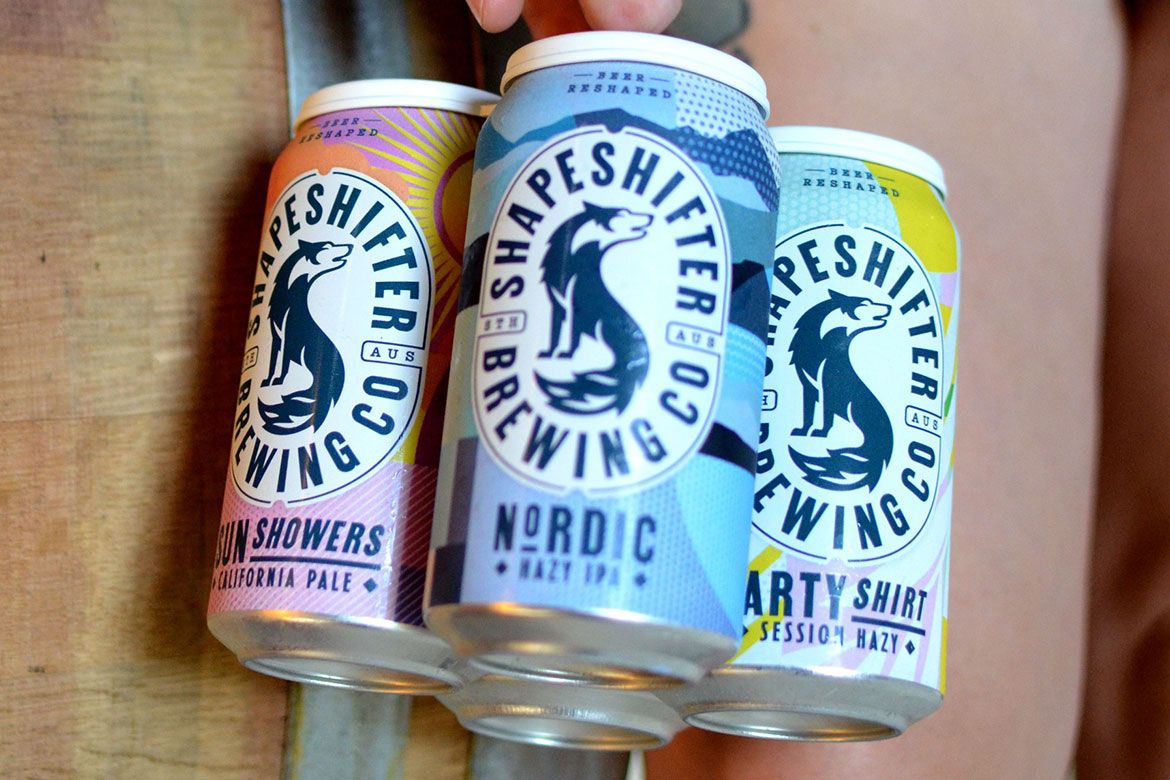
It's not just West Coast pilsners satisfying those craving leaner, hop forward, crisp beers, Cali IPAs and pale ales are on the up too. Admittedly, it's a naming convention which only seems to add another layer of confusion given California is part of America’s West Coast.
So what separates a Cali IPA from a West Coast IPA?
“For me,” James says, “the malt in a traditional West Coast IPA did have some percentage of crystal, and you do get a bit of a malty backbone in the beer.
“That might be more 2010s style, but even if you switch to a lighter malt base, the hops are still often the classic US hops – any of the C hops, or even Amarillo or Simcoe.”
When it comes to the prefix “California”, Shapeshifter's brewers like to use an entirely pilsner malt base, and are less reliant on the citrus/pine realm of hops, instead leaning more into tropical varieties more common in hazy, juicy IPAs and pales.
“There’s a big element of wanting the refreshingness of a lighter, crisp beer that still has that punchy hop aroma,” James says.
Shapeshifter have brewed both California IPAs and West Coast pilsners and the brewery’s recently-refreshed core range features a California pale ale called Sunshowers, which they believe delivers a greater crispness when compared to both hazy pales and traditional American pales.
“As brewers, we’re always looking to make sessionable beers that have more flavours and that you can drink more of,” James says.
At Banks, the lines between California IPA, West Coast IPA and West Coast pilsner are rather blurred; Chris reckons the difference between Cali IPAs and West Coast pilsners is minute.
“Personally, I think they’re the same thing,” he says. “That’s pretty much how we look at it: they’re the same beer style, but Cali IPA has a bit of a higher ABV.”
Much of that reasoning has to do with the way they make their Cali IPAs and many of their West Coast IPAs: using lager yeast. It might sound like a weird approach when brewing an ale but it’s common enough practice for some brewers – including one of the world's favourite IPA makers, Firestone Walker. Most of Banks' West Coast and Cali IPAs have used lager yeast for the last 18 months.
“We just love it,” he says. “It’s just so much cleaner, just the profile lets the hops pop and shine.
“For me, a hoppy beer with ale yeast tends to stale so much quicker, even if it’s pretty fresh; I think the lager yeast just holds the beer better for longer.”
During his most recent trip to the States, Chris found many of the clearer IPAs he tried, whether labelled California or not, featured a stripped-back malt profile and made him fall in love with hops all over again.
“It’s just so drinkable, so hoppy and clean upfront,” he says.
On The Stereo, Listen As We Go
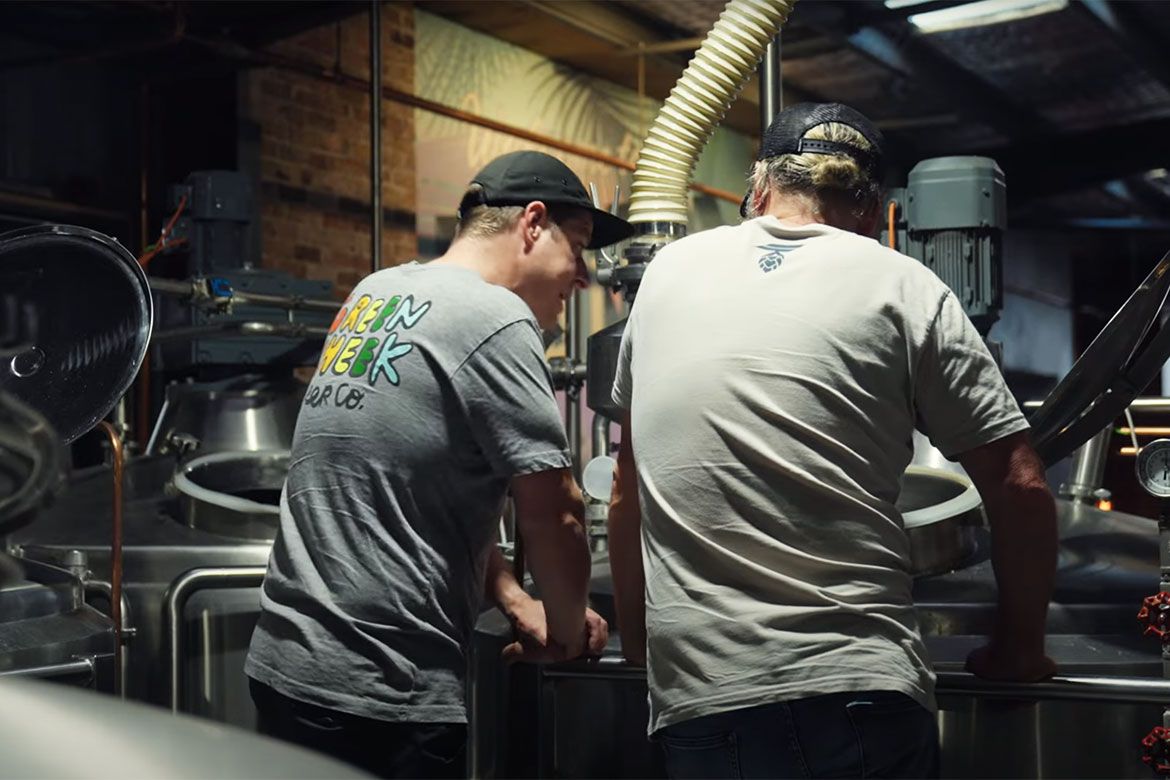
At Balter, Scotty also has plenty of time for such beers; he spent one leg of their USA Mouth Holiday brewing with Evan Price from Green Cheek, a brewery that's helped lead the development of the style. Like Chris, he sees West Coast pilsners and California IPAs as "close enough to reach out and shake hands" and a sign of evolution in brewing.
While hazy beers aren’t going anywhere in a hurry, he sees both styles meeting a desire for hoppy, crisp beers with a lower bitterness than traditional West Coast IPAs. What's more, he points to just how broad the IPA category has become, and how the beer world's approach to styles is always moving.
“All of that is fractured, so it depends on your point of view and sometimes your mood,” he says. “If I’m colouring outside the lines of this style then who gives a shit? Because that’s how you get evolution and things are always moving.”
Scotty also sees California IPAs as snappy beers with plenty of fruity characteristics that hazy drinkers love.
“It’s getting that pendulum as it swings back to land in the right place,” he says. “Brewers do actually learn things. They are able to incorporate a bit more of that juiciness, and tropical characters that are a bit more flavour- and aroma-focused, rather than just hardcore bitterness.
“It’s probably more of a mindset too, but I think there is something to that piece of making the beers more drinkable and not such a tough guy’s club.”
















